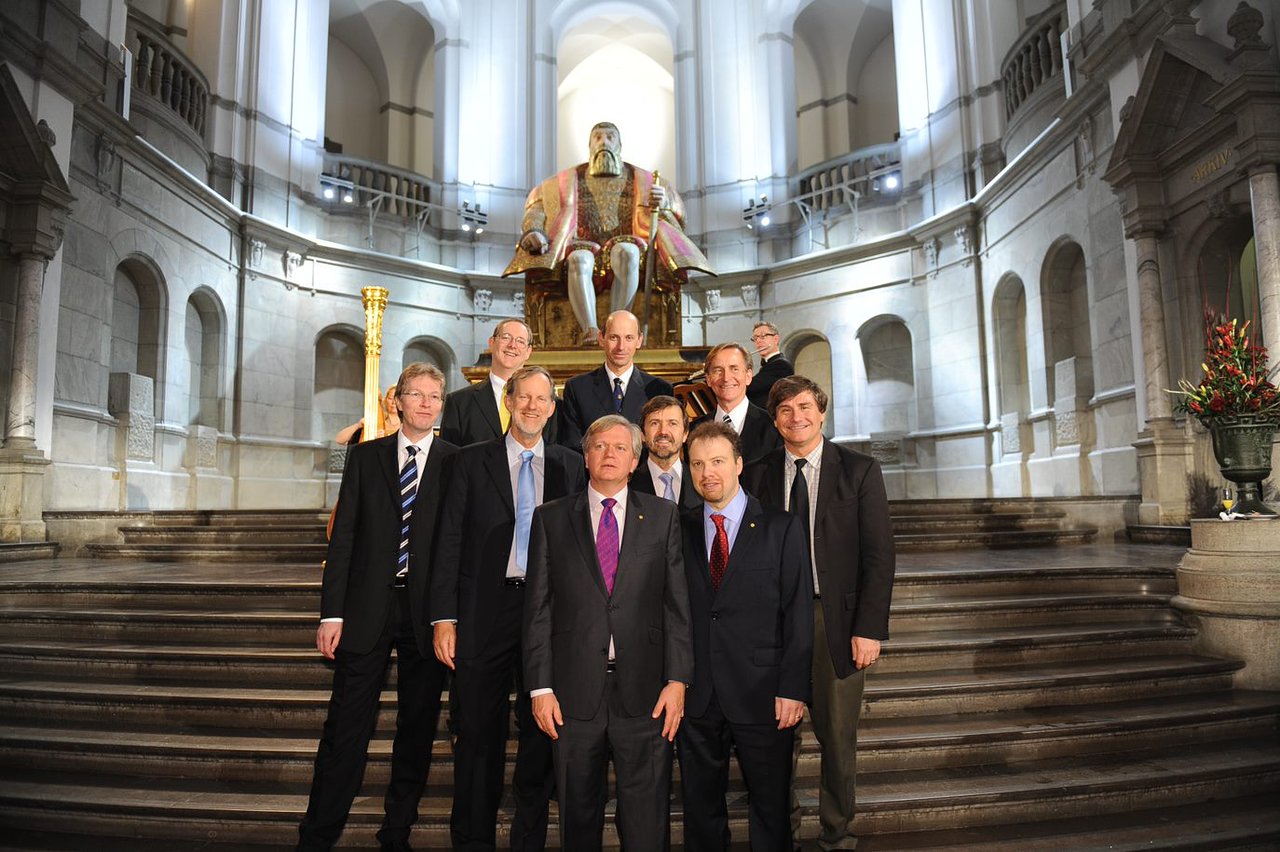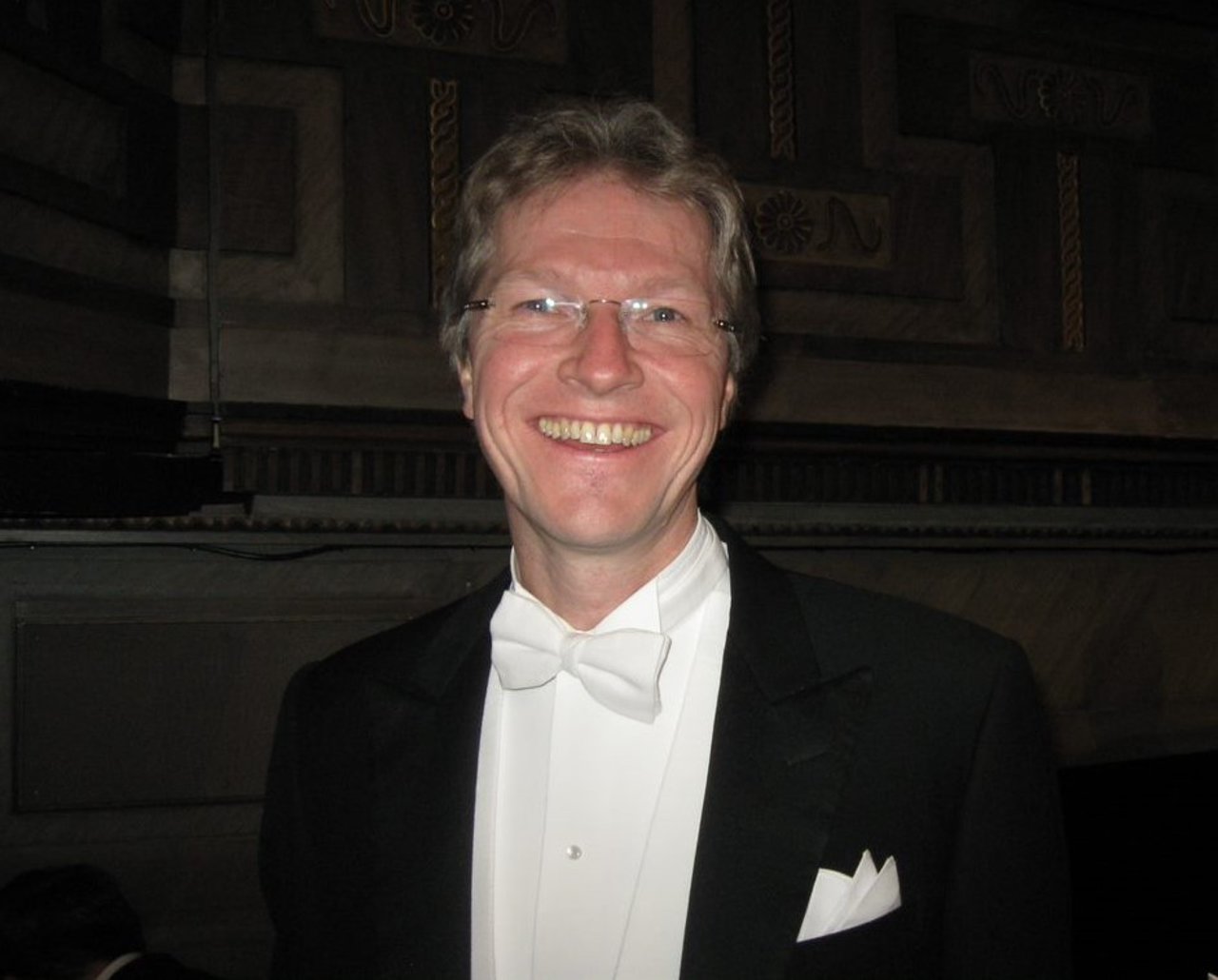
A Nobel Achievement (part I)
How it feels to be part of a team that makes a Nobel Prize-winning discovery
- About the Nobel Prize-winning discovery of the accelerating expansion of the Universe
- How it feels to be part of a Nobel Prize-winning team
- What happens at a Nobel Prize ceremony
- Why ESO scientist Bruno Leibundgut loves astronomy
Q. First of all, could you tell us about the amazing discovery that gained your team a Nobel Prize in Physics?
A. Twenty years ago, it was known that the Universe is expanding, that other galaxies are moving away from us and from each other. But the big question at the time was: will the expansion continue forever or will it stop at some point in the future, causing the Universe to collapse? Our team — the High-z Supernova Search Team — was trying to answer this question when we were surprised to find that distant objects were further away than expected in a freely expanding Universe. It appeared that they were somehow being pushed away...we had found that the Universe was not only expanding — it was accelerating! This means that not only is there normal matter in the Universe, but also another component that we cannot see, that pushes space apart. This unknown entity is now called dark energy.
Q. Half of the Nobel Prize went jointly to your team members Adam Riess and Brian Schmidt. Why were they the ones to receive the prize, and what was your role in the team?
A. Brian Schmidt was the team leader; he formed the team in 1994. Adam Riess collected most of the data in 1995 and 1996, which included information about the brightness of ten distant supernovae. Brian asked me to join the team to bring some ESO observing time...it’s hard to define what exactly every team member’s contribution was, but I worked a lot with the data that we gathered using ESO telescopes. I was also part of the discussions about the implications of the data.
Q. Can you tell us about your week in Stockholm, where the Nobel Prize was awarded? What did you do while you were there? What was the atmosphere like?
A. It was an extremely full week! Aside from the award ceremony itself in Stockholm’s National Theatre, there was also a Nobel concert, attended by the Queen of Sweden, to which we were invited by the Nobel Prize winners. There were so many receptions and celebrations throughout the week, and it was even busier for the winners!
The winners, Adam Riess and Brian Schmidt, were very kind. They used their prize money to invite all of the team members, plus their partners, to the ceremony for the whole week. We even got to stay in the same fancy hotel as they did: the Grand Hotel in Stockholm.
Lots of our colleagues were there, including the other winning team, the Supernova Cosmology Project. The two teams had been in strong competition, because we were working towards the same result at the same time, sometimes even using the same instruments. That week, though, the competition fell away, because we were all winners and we had all contributed to this discovery. It was wonderful because we had the chance to discuss a lot, to talk about past experiences, things that occurred during the experiments. There was a lot of reminiscing and a lot of fun.
Q. What was the most special moment for you during the celebrations?
A. There were plenty of special moments, as the event is an incredible celebration of scientific research. One moment that stands out took place at the post-ceremony party. I bumped into Brian Schmidt, congratulated him and said: “Look, you're a different person now, a certified genius!” He turned to me and said, “But Bruno, nothing will change between us.” And it's true — now we meet less than once a year, but our relationship remains close.

Q. What current questions in astronomy do you wish you knew the answers to?
A. Oh, there are so, so many! It would be wonderful to understand more about dark energy. What is it? Where does it come from? What’s the physical basis for it? We’re pretty much searching in the dark — literally! We haven’t really made progress in this field over the last ten years but we hope that with the Extremely Large Telescope, we will be able to shed light on this mystery.
Q. What do you love most about astronomy?
A. I love the detective work: the fact that you can work away at a problem for years, debate it with friends, look at it from different angles, and then suddenly you have a breakthrough and see something you’ve never seen before. I also love the ingenuity: the way that we have to devise our experiments without being able to touch our subjects. We can’t modify the sky or the stars: we just have to take them as they are, and employ our physical intuition to understand what we see.
One of the things I have focused on over the course of my career is Supernova 1987A, which I had the chance to see in the sky with my own eyes. Every time we look at it with the Very Large Telescope or the Hubble Space Telescope, we find something else unexpected — it’s amazing to be continually mesmerised by what this single object is doing. It’s beautiful because it’s an object that changes on the same timescale as a human lifetime, and it exploded at the beginning of my career. I look forward to seeing what else we can learn about it.
Links
Biography Bruno Leibundgut
After a Physics degree and a PhD in Astronomy, Swiss astronomer Bruno Leibundgut found himself in the United States for two postdoctoral positions. Returning to Europe in 1993, Bruno started working at ESO in a group that defined how the VLT would be operated. After a couple of years he became Deputy VLT Programme Scientist, then in 1999 moved on to building up the data quality control group, connected to the archive. Bruno was Head of Office for Science for eight years, then Director for Science for six years, before closing the circle by becoming VLT Programme Scientist four years ago.




